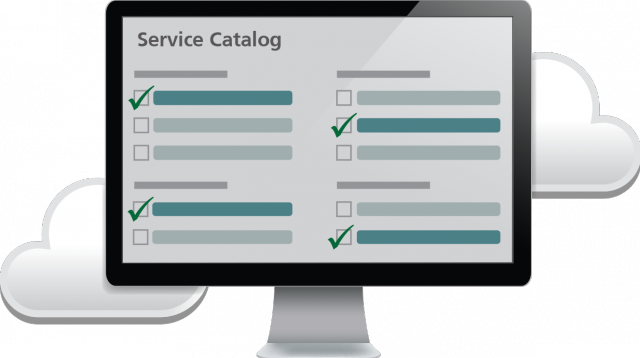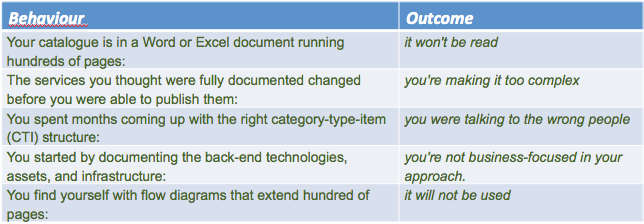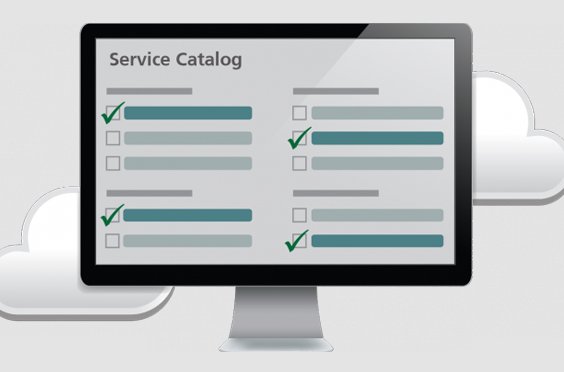In these days of unified communication, virtualisation, SDN and orchestration layers, we see technologies converging to provide a simple and single interface for managing Voice, Data and IT infrastructure resources. At the same time, large technology suppliers are trying to add to their value proposition to provide a more complete service offering specifically around mobility. Some examples of this are the recent acquisitions of MDM providers by companies like SAP, IBM, VMware and Cisco, as well as partnerships like the recent alliance of Apple and IBM.

It’s always interesting when I talk to our clients about Telestar’s Bluewater™ program that there hasn’t been a similar evolution on the business process side, supported by a unified service or tool set. Such a business tool set is often called a Service Catalogue.
One of our clients shared that they should have started with a tool in the first place because today “our catalogue really serves the needs of an IT accounting system tool, a workflow tool, a service level reporting tool, a relationship management tool and a product lifecycle tool.” This can only be done with a single tool designed to manage all of these functions.
As an enterprise managed mobile service provider, we designed a holistic end-to-end procure-to-pay solution for any ICT service, simply because it made sense. Telestar’s integrated Service Catalogue, combined with the rest of the Bluewater™ managed mobility suite, addresses all provisioning and billing issues in the one service offering.
So why isn’t everyone using an integrated Service Catalogue?
Most of our new clients seem to have multiple platforms delivering aspects of the end-to-end communications cycle. They may have SAP or Oracle for their approval process, they may or may not use the same platform for their asset management, they definitely have a different platform for their bill reporting and expense management, they have a different platform for security (mobile or NAC), they again may have had a different system for their financials, and all of these are held together by human glue and effort. There is no automatic validation across the full end-to-end life cycle,.
What does that have to do with a Service Catalogue?
I’m glad you asked. 😉
Telestar™ has proven that if you can get this end-to-end process correct from the start, this will improve compliance and operational effectiveness typically resulting in cost savings of 4% – 27%. Additionally, your enterprise business processes and strategic objectives will align with your internal and supplier service delivery capability. In simple terms, your business needs are aligned with your ICT deliverables.

According to independent research, the end result of a successful implementation of an integrated Service Catalogue across all ICT services is measurable and dramatic.
Some noted benefits are:
- Up to 30% reduction in the operational cost of delivering IT services;
- Up to 20-50% faster cycle time for the fulfilment of services;
- Better allocation of resources to effectively meet business demand;
- Significant improvements in internal customer satisfaction.
- Accurate and up-to-date asset management
- Optimisation of workflow
- Optimisation of asset deployment

So what will a Service Catalogue achieve for your organization?
You need a Service Catalogue if:
- you need to clearly align your strategic objectives with your service delivery capability, with control and visibility;
- business users cannot interact with IT in an easy and controlled way;
- there is no simple, auditable communication channel between the business and your IT team and its service providers;
- it takes too long to make business decisions due to lack of visibility and understanding of what ICT services are available;
- if the value of IT is not understood well by the business; or
- if business expectations are not met consistently.
Some of the challenges in delivering an effective Service Catalogue are:

A good Service Catalogue helps the business focus on business while ensuring IT teams and their service providers receive the correct and necessary information to deliver on their responsibilities to meet business objectives and time lines. In my opinion this is the bare minimum a good Service Catalogue should do for any organisation. So what’s better?
A great Service Catalogue is a fully integrated and adaptable module (with all standard workflow, approval process, and profiling capability) and forms part of an overarching managed mobility solution offering across all ICT services (ie: Mobiles, Fixed Voice, Fixed data, VC, routers, Switches, etc.), giving you the ability to:
- map ICT services explicitly to business needs;
- set realistic expectations, and more importantly meeting these consistently;
- standardise service delivery and improve service quality; and
- influence and set service levels by providing visibility.
It helps accelerate decision-making by business users in requesting the right service that meets business needs, by empowering and providing control and visibility.
By publishing tiers of service and cost-performance trade-offs, your business can effectively “right-size” consumption, reduce overbuying, and control demand.
A fantastic Service Catalogue is an actionable, integrated service catalogue that in addition to the above will:
- decompose back-end services into components and route to different service providers, allowing for profiling, and resulting in three benefits:
- improved capacity planning, particularly if standard components are used;
- quicker service provisioning; and
- better buying forecasts which help to lower costs.
- automatically update the asset register to maintain a high level of accuracy of the asset data base;
- enable full order validation against billed services;
- enable full infrastructure validation against delivered and billed services; and
- integrate up- and down-stream into relevant existing platforms while delivering the same value proposition.
Conclusion
Too many Service Catalogue projects stop with publishing a document or posting it on the web. These catalogues aren’t used and they don’t make an impact. A successful ICT Service Catalogue is accessible the moment the business wants it, anywhere, any time, for any device. Here are is how we do it:
- Make it interactive. Rather than presenting a super-set of all possible services and options, a good Service Catalogue personalises the users’ view of the Service Catalogue based on their level of authority, job function and role. Include actionable job function as part of the experience (eg: allocation to cost centre).
- Make it actionable and visible. End users should be able to place an order within the Service Catalogue with automated approval processes built in. The ability to see the status of orders is key for all users at all levels. Managers should have full visibility and ability to report on business activity.
- Make it a single point of truth – integrate it! Integrate this into your managed mobility for clear cost and asset allocation, and for review of IT costs for budgeting decisions. A great Service Catalogue will automatically update your asset database ensuring an accurate view off all deployed and reserved assets at any time. This allows any organisation to have a blue print of their ICT asset at their finger tips at any time, accelerating budgeting decisions, contract negotiations, benchmarking and tender creations.
- Keep them coming back. Use the catalogue to keep the business updated on IT consumption and service levels, and provide end users with the ability to check the online status of their requests.
With these principles in mind, you can promote adoption. Otherwise, your Service Catalogue is likely to gather dust on the virtual shelf in a virtual machine.

